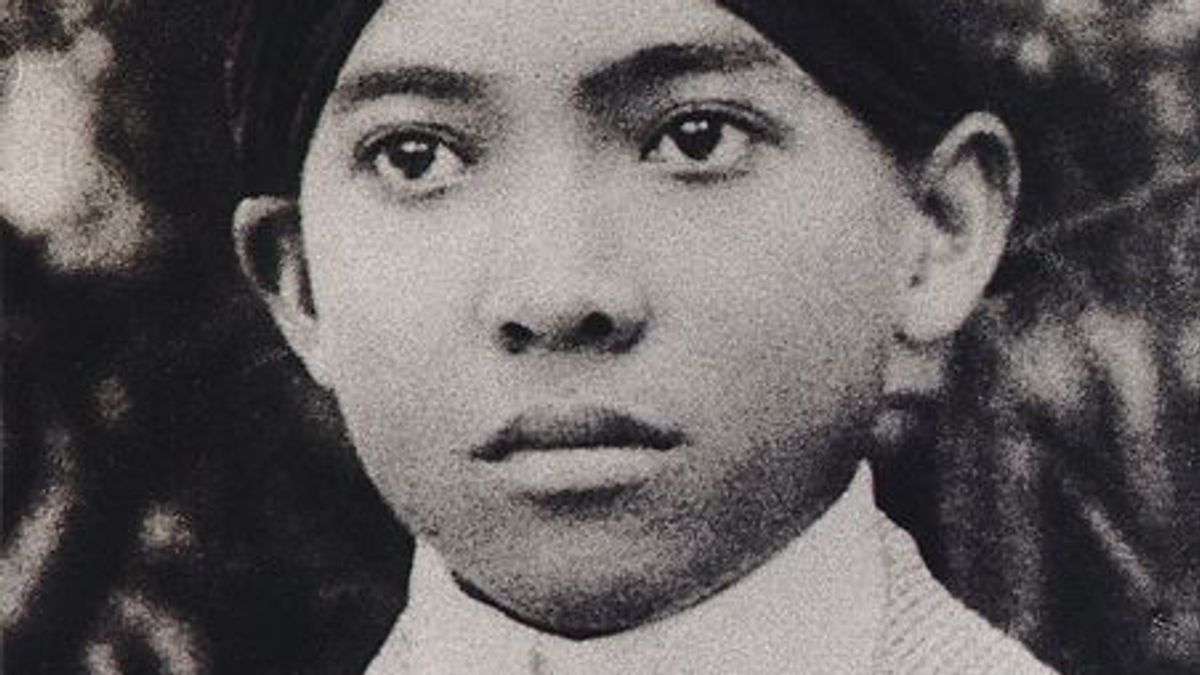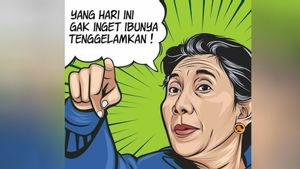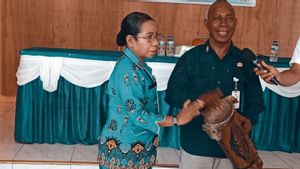JAKARTA - Every Bumiputra has at least experienced bullying by Dutch children: physically and verbally. Soekarno even felt it. Inlander, stupid, and lousy taunts were used to him. Not infrequently Bung Karno was angry with the Dutch. Fights are inevitable. Sometimes Bung Karno won. Sometimes you lose. But who would have thought that the bullying had sparked Bung Besar's spirit to free Indonesia.
Dutch colonialism was a painful period for the natives. In addition to leaving deep scars, the presence of the Dutch also placed the position of the natives in their homeland at the lowest level. The argument for the grouping of three levels of the Dutch East Indies population in 1854 became the estuary. Since then, completely Europeans (whites) have been placed as number one citizens. Foreigners, Arabs or Chinese are the number two citizens. While the Bumiputra are number three citizens.
The racist sentiment towards the bumiputras continues. Racism appears in all fields. The Dutch colonial government began forbidding an bumiputra from following the Dutch way of life – from dress to entertainment. Bumiputra is also prohibited from occupying first class when riding a tram or train.
The Dutch also issued two separate and different law books between the natives and the Europeans. All of these privileges made the Dutch people live like kings in the Dutch East Indies. In fact, many Dutch people in their hometowns actually come from the commoners.
“In Holland most of them belonged to the poor class and they came to the Indies as sailors and soldiers, hoping to make a fortune in Asia. Few succeeded, and most of them, once they became high-ranking officials in the far east, returned to Holland unattractive.”
“In Asia they live like kings; in the Netherlands they are (only) ordinary citizens, excluded from the regent caste, the oligarchic rulers who control the republic. Moreover, many Dutch legally married Indonesian women, and for social reasons the directors tried to prevent the immigration of Indonesians to Europe. There are also those who have an interest in staying in the east. The descendants of these blijver (resident Dutch) became the core population of Batavia,” wrote Bernard HM Vlekke in the book Nusantara (1959).
In a sense, every Dutchman who came to the Indies would experience a transformation. His degree suddenly rose when he stepped foot into the archipelago. All of this was due to the basis of colonialism that had been planted long before the Dutch Kingdom took over the archipelago from the hands of the VOC trading airline which went bankrupt. The VOC indirectly inherited the image of the skin as a leader, employer, or important person in the archipelago.
The superiority obtained by the Dutch made them often underestimate the natives. Even since they were still in the cloth, Dutch children had been taught to mock the natives. Not infrequently bullying is followed by physical action through fights.
“What hasn't changed drastically in the Indies is how skin color continues to differentiate social categories. During the late 9th and early 10th centuries in pre-colonial Java, beauty ideals greatly extolled light skin tones. Throughout the 17th and 18th centuries, records of European testimonies stereotyped dark-skinned natives of the Indies as lazy, stupid, and prostitutes," wrote L. Ayu Saraswati in the book Putih: Skin Color, Race, and Beauty in Transnational Indonesia ( 2017).
Sukarno's bullying
Bullying by Dutch children was felt by all national figures. They are considered trivial, considered stupid just because they were born as bumiputra. Meanwhile, Soekarno did not escape the bullying of Dutch children.
Since childhood Bung Karno was known as a person who strongly opposed the domination of the 'white skin' group. Soekarno instilled that his fate was already set to conquer. Not conquered. It was this attitude that made Bung Karno verbally and physically abused.
One of the experiences of bullying was obtained by Bung Karno when he entered a football association. At that time, football was not played by the natives, even if there was it was very limited. Because, football is considered a high-class game, the game is white.
Bung Karno tried to penetrate those boundaries. He can play in club football even if only for a moment. All because of the ridicule Bung Karno received more than his playing time in football associations.
"Hey... youuuu Bruine Hey, poor stupid brown skin boy... bumiputera ..... inlander ..... village boy Hey, you forgot to wear shoes," Soekarno recalled in his autobiography written by Cindy Adams in the book Bung Karno: Connecting the Tongue of the Indonesian People (1965).
Likewise with the bullying that Bung Karno received when he started studying at Hoogere Burgerschool (HBS), Surabaya. In total, HBS has 300 students. Only two of them are natives. As a result, Bung Karno was bullied every day from verbal to physical by Dutch children.
Unable to accept constant bullying, Bung Karno was furious. Fights are inevitable almost every day. Sometimes he wins. Sometimes he loses too. In essence, almost every day he came home in a battered condition. Even then, the perpetrators of bullying are often defended by school owners.
Bung Karno was not at his wits end. He believes that he can still compete with Dutch children through the field of study. However, it is far from being roasted from the fire. Bumiputra children were again not given the space to be superior to Dutch children.

“However, even if we persevere day and night, the grades earned by Dutch children are definitely higher than those received by Indonesian children. Skill scores are measured by numbers. The highest 10 and the six are sufficient marks and this is what most inlanders accept. We have a proverb about these numbers: ten is for God, nine is for professors, eight is for extraordinary children, seven for Holland and six for us. The number ten has never been accepted by the natives," explained Bung Karno.
The experience of bullying in fact forged Bung Karno's spirit to bring Indonesia free from the shackles of Dutch colonialism. Whenever he was bullied, Bung Karno did not lose his spirit. Even against. It is evident when Bung Karno began to grow up, he appeared in the midst of the Bumiputra from the pulpits to ignite the spirit of independence. Because of that, Bung Karno became clear evidence that the Bumiputras instigated resistance until Indonesia became independent.
“Similarly, Soekarno was the buster of the myth that an inlander could not become a ruler, and even made Indonesia independent. Just as the myth of Napoleon is not tied to any regime change, so the myth of Soekarno is not tied to reality – especially the reality of actual conditions, such as fluctuations in oil prices, population density, international conditions and so on. We, like other people, always love to dream," concluded Historian Ong Hok Ham in the book The Lost Revelation, a Shaking Country (2018).
*Read other information about SOEKARNO or read other interesting articles from Detha Arya Tifada.
Other MEMORIESThe English, Chinese, Japanese, Arabic, and French versions are automatically generated by the AI. So there may still be inaccuracies in translating, please always see Indonesian as our main language. (system supported by DigitalSiber.id)









